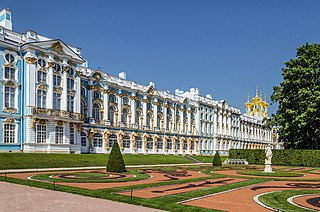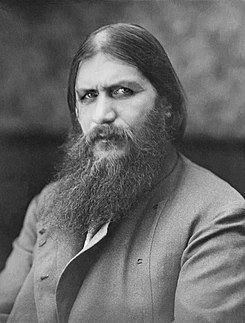| Valentina Ivanovna Chebotaryova | |
|---|---|
From left to right, Valentina Ivanovna Chebotareva, Grand Duchess Tatiana Nikolaevna of Russia, Princess Gedroits, and Dr. Nedelin tend to a patient, ca. 1915. | |
| Died | May 6, 1919 Russia |
| Occupation | Red Cross nurse |
| Spouse(s) | Porphyry Grigoievich Chebotarev |
| Parent(s) | Ivan Stepanovich Doubiagsky, father; Olga Segeyevna, mother. |
Valentina Ivanovna Chebotaryova (birth date unknown - April 23 (O.S.)/May 6 (N.S.), 1919) recorded her impressions of work in a military hospital in Tsarskoye Selo, Russia during World War I in her journal. Portions of the journal, which included her impressions of Tsarina Alexandra and of her daughters Grand Duchess Olga Nikolaevna of Russia and Grand Duchess Tatiana Nikolaevna of Russia were published in magazines, books, and in her son's memoirs after the war.

Tsarskoye Selo was the town containing a former Russian residence of the imperial family and visiting nobility, located 24 kilometers (15 mi) south from the center of Saint Petersburg. It is now part of the town of Pushkin. Tsarskoye Selo forms one of the World Heritage site Saint Petersburg and Related Groups of Monuments. During the Soviet times it was known as Detskoye Selo.

Russia, officially the Russian Federation, is a transcontinental country in Eastern Europe and North Asia. At 17,125,200 square kilometres (6,612,100 sq mi), Russia is by far or by a considerable margin the largest country in the world by area, covering more than one-eighth of the Earth's inhabited land area, and the ninth most populous, with about 146.77 million people as of 2019, including Crimea. About 77% of the population live in the western, European part of the country. Russia's capital, Moscow, is one of the largest cities in the world and the second largest city in Europe; other major cities include Saint Petersburg, Novosibirsk, Yekaterinburg and Nizhny Novgorod. Extending across the entirety of Northern Asia and much of Eastern Europe, Russia spans eleven time zones and incorporates a wide range of environments and landforms. From northwest to southeast, Russia shares land borders with Norway, Finland, Estonia, Latvia, Lithuania and Poland, Belarus, Ukraine, Georgia, Azerbaijan, Kazakhstan, China, Mongolia and North Korea. It shares maritime borders with Japan by the Sea of Okhotsk and the U.S. state of Alaska across the Bering Strait. However, Russia recognises two more countries that border it, Abkhazia and South Ossetia, both of which are internationally recognized as parts of Georgia.

World War I, also known as the First World War or the Great War, was a global war originating in Europe that lasted from 28 July 1914 to 11 November 1918. Contemporaneously described as "the war to end all wars", it led to the mobilisation of more than 70 million military personnel, including 60 million Europeans, making it one of the largest wars in history. It is also one of the deadliest conflicts in history, with an estimated nine million combatants and seven million civilian deaths as a direct result of the war, while resulting genocides and the 1918 influenza pandemic caused another 50 to 100 million deaths worldwide.






















